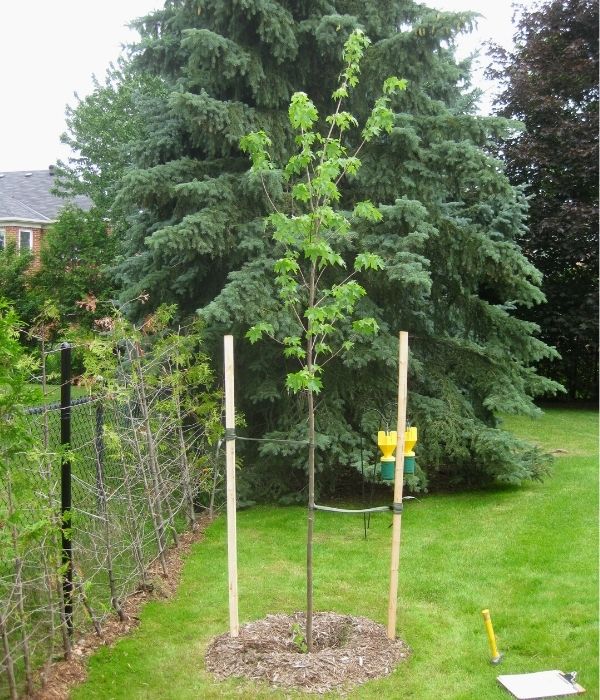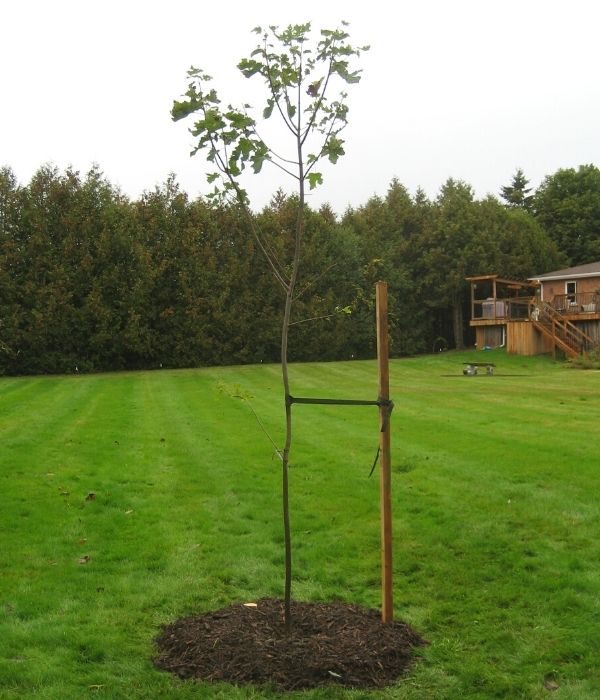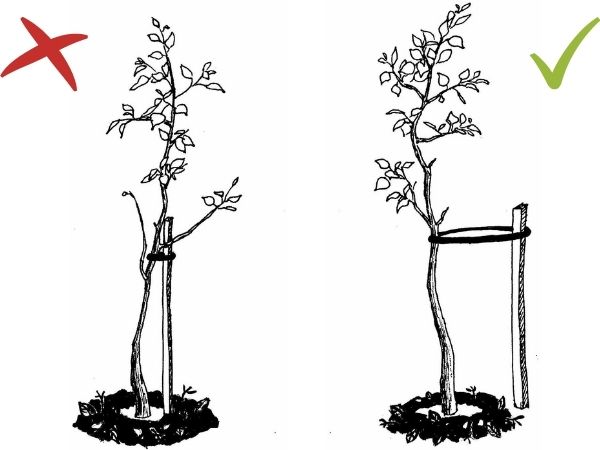We all want the same thing for our newly planted trees – for them to get the best start to life in their new home. As such, we often want to provide them with as much support as possible, including staking. While these actions are typically well-intended, staking a young tree isn’t always necessary and may cause more damage than good. So how do you know if your tree needs a stake, when to stake it and how to do it properly? Thankfully, we are here to tell you everything you need to know about staking your young tree:
Should I stake my tree?
One of the most popular tree care questions we get at LEAF is “should I stake my newly planted tree?” and the answer is most often no. If your young tree is healthy, has a sturdy trunk and was planted properly, chances are, you won’t need to stake it. In the first few years after planting, young trees expend a lot of energy underground, working to establish a strong root system. This underground root growth is stimulated by the movement of the tree in the wind aboveground, which is crucial for proper structural establishment and long-term stability. When a tree is staked, especially when done incorrectly, that movement in the wind becomes restricted, which may not prompt the important and necessary root growth needed to anchor the tree.

When should I stake my tree?
While staking a young tree by default is not necessary, in some situations, it can help to keep the tree upright while the roots establish – but only in certain environments and only if done properly. You should only stake your tree if:
- It has an unusually small root system that may not be able to support the trunk and canopy
- The canopy is top heavy (the leaves/branches weigh more than the trunk can support)
- It is planted in a very windy location
- It is planted in a very high traffic area where there is a higher potential for vandalism and/or damage
- The soil is sopping wet at the time of planting

How do I stake my tree?
If you need to stake your tree, it is important that it is done properly. To do so, follow these three easy steps:
- Drive one or two six-foot tall wooden stakes into the ground about two feet away from the tree or just outside of the mulch ring. If you are using two stakes, drive them in on opposite sides of the tree and if you are using one stake, drive it in on the side where wind comes from (usually west side) or on the side opposite of a lean. Keep the stakes at least two feet away from the trunk of your tree to avoid damaging the roots.
- Loosely fasten some soft, flexible ties (old nylons are perfect for this!) to the tree and stake(s) at about three to four feet above the ground. Do not secure the material very tight, as slight movement of the trunk in the wind will encourage better root growth and reduce any potential injuries to the trunk.
- Remove the stake(s) and ties after one year to avoid girdling. As a tree grows, these ties can cut into the delicate conductive tissue located just under the bark of the tree, causing serious damage.

Remember, unnecessary and improper staking can lead to:
- Stunted root development, leaving your tree unable to stay upright once the stakes are removed
- Poor trunk development, leaving your tree weak and more susceptible to snapping in high winds after the stakes are removed
- Trunk damage from staking materials being tied to tight, especially when they are also left on too long
Important Takeaways
Now that you’ve learned all about why to stake, when to stake and how to stake, here are a couple of important take aways:
- Don’t stake if you don’t have to
- Stakes are only a temporary solution
- Use soft materials to avoid trunk damage
- Remove stakes and ties after 1 year to avoid girdling
For more information on staking and other important tree care techniques, please visit our website!
Brenna Anstett is the Residential Planting Programs Manager and an ISA certified arborist at LEAF.
LEAF offers a subsidized Backyard Tree Planting Program for private property. The program is supported by the City of Toronto, the Regional Municipality of York, the City of Markham, the Town of Newmarket, the Regional Municipality of Durham, the Town of Ajax, the City of Oshawa, the City of Pickering, the Township of Scugog, the Town of Whitby, Ontario Power Generation, Ontario Trillium Foundation and Grand Trees/Canadian Trees For Life.
